Search Results for 'Old Galway Society'
35 results found.
The Augustinian nunnery
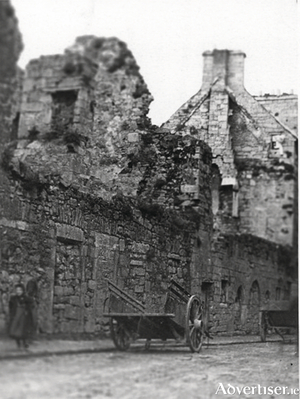
The Augustinian Friars have been in Galway since 1508 when Margaret Athy, whose husband was mayor at the time, built a friary at Forthill, near a spring called St Augustine’s Well, the waters whereof wrought miraculous cures. In O’Flaherty’s Iar-Chonnacht, there is reproduced a document in which a miraculous cure is attested to by the signatures of several witnesses.
The Head of the River
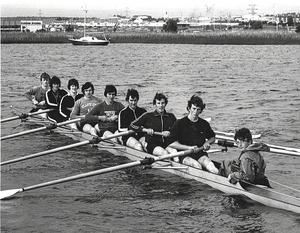
In 1976 a group of likeminded people got together to work out a way to make the sport of rowing in Galway more competitive. They decided the best way to achieve this was to set up a new club, and so Tribesmen Rowing Club was formed. Starting a new rowing club is an expensive business so they began a number of fundraising activities, running raffles, organising dances, etc. They managed to get their first crew on the water in 1977.
The Galway General Omnibus Company
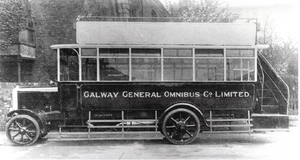
Our photograph today shows a Karrier double-decker bus which was operated by the Galway General Omnibus Company. It was taken at the Spring Show in the RDS in 1924, before it went into revenue earning service. The side panel carries the name of the company, but not the crest. The small lettering on the chassis below the word ‘Galway’ reads ’12 m.p.h.’ A major problem with this type of vehicle was its chain drive which frequently slipped off and caused breakdowns. The bus had solid-tyred wheels and was uncomfortable to ride in.
A postcard of Toft’s Amusements
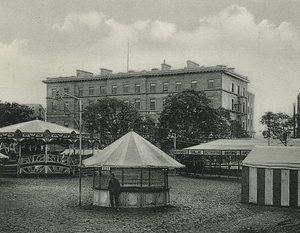
The Toft family were associated with Eyre Square for many years since 1883 when they first brought a carnival there.
The Auxiliaries in Galway

As the guerrilla war attacks by the Irish Volunteers on the RIC began to escalate in 1919, the British government recruited World War I veterans as a complementary force to the RIC. It advertised for men willing “to face a tough and dangerous task”. These were the Black and Tans. A further campaign was launched to recruit former army officers who were specifically formed into counter insurgency units known as the Auxiliaries or ‘The Auxies’. They wore distinctive ‘Tam O’Shanter’ caps. One of these units, D Company, was stationed in Lenaboy Castle and in ‘The Retreat’ in Salthill.
Renmore Barracks, a brief history

Because of its strategic location, Galway was always an important centre for the military. The original fort in Renmore was known as St Augustine’s Fort and featured prominently in the 1641 rebellion, after which it was abandoned, the purpose for which it had been built having been accomplished.
Galway camogie

We know from the old sliotars on exhibition in the folk museum in Turlough near Castlebar that the game of hurling has been played for many centuries, but what of the game of camogie? Two prominent Irish language enthusiasts and cultural nationalists, Máire Ní Chinnéide and Cáit Ni Dhonchadha, were credited with having created the sport while a brother of Cáit, Tadg, was the person who drew up the rules in 1903. So there was always a male presence within the administrative ranks of the sport. The game emanated from the Gaelic League and was dependent on the structures and networks provided by that organisation during the initial expansion of the sport. It was also closely linked with the GAA.
Market Street, one hundred years ago
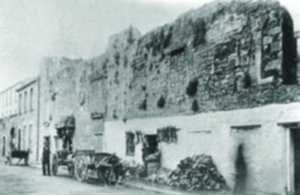
The title of this photograph is ‘Old Building, Market Street’ and it was taken about 100 years ago. The building in the foreground was at one time occupied by the Augustinian nuns who were based in Galway (where the Mechanics is today in Middle Street) before 1651. The last Augustinian nun to die in Ireland is buried in Forthill. These sisters formed part of the same Augustinian Order as the friars, as do their contemplative successors today in countries like Spain and Italy. Continuing persecutions and other historical pressures saw to the end of these nuns in Ireland, though some lingered on in Galway up to the middle of the 19th century.
Christmas Day in the Pro-Cathedral, 1842
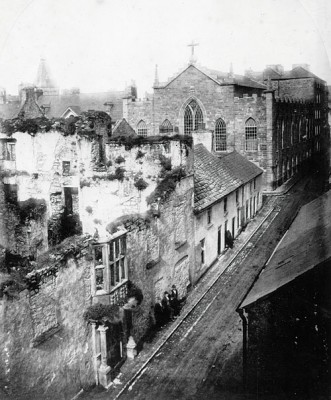
This photograph of Lower Abbeygate Street was taken from the top of a warehouse on the corner of Whitehall c1870. In the foreground you can see the remains of the Browne Mansion, and the original site of the Browne Doorway. Further up the street is the Pro-Cathedral, which was the site of an appalling disaster on Christmas Day, 1842. The following, which appeared in The Dublin Pilot, is a graphic account of what happened.
Sparks Rugby Football Club
The Connacht Junior Cup was donated by a man called Senior. He was Alfred Senior, professor of chemistry in UCG from 1891 to 1918. The cup was first played for in 1905, and as Ralph O’Gorman says in his wonderful book entitled Rugby in Connacht, the event always had a unique culture, it was competitive and unpredictable, and had a wide geographical spread of participating clubs.

